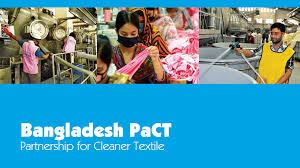GET IN TOUCH
- Please wait...

The Bangladesh Partnership for Cleaner Textile (PaCT) is a joint initiative, working towards the adoption of best practices in the textile wet processing sector (washing, dyeing and finishing (WDF) units). The program aims to become a leader in driving long-term competitiveness, and environmental sustainability of the sector by addressing critical issues, particularly focusing on the reduction of water, energy, and chemical consumption and wastewater pollution. IFC along with LightCastle aimed to conduct a study to assess the scenario of resource consumption in the textile – wet processing sector in light of the PaCT advisory services.
The aim of this benchmarking study was to present a relevant and holistic view of the wet-processing sector with regard to resource consumption in three thematic areas: resource use and intensity, technical best practices, and resource efficiency management practices. Textile wet-processing consists of several operations: pre-treatment, cleaning, bleaching and heat setting, dyeing, printing and finishing and the factories are categorized according to the type of operations. Objectives of the study included:
102 factories were assessed and factory level data was collected to benchmark resource consumption across water usage, total energy usage, greenhouse gas production and waste water production. The barometer was set at the 75th percentile benchmark (which means 25% of the factories would outperform the benchmark, and 75% would underperform) for presenting a realistic target for the factories to achieve.
The data and insights generated were leveraged to formulate abatement curves for comparing resource efficient practices and technologies and were done for water consumption and greenhouse gas emission. There were 2 types of interventions adopted – 67 factories with basic interventions and 35 factories with in-depth interventions. Again, both type of interventions were sub-divided into different factory types. Abatement curves for water consumption and greenhouse gas emission list technologies showing their abatement potential alongside the amount of resource savings were created.
We worked with IFC Bangladesh to understand water and energy consumption patterns and techniques in the textile/RMG facilities of Bangladesh across 100+ factories. Based on this IFC developed benchmarks and best practices for water and energy use that would drive future interventions of IFC’s PACT (Partnership of Cleaner Textile) program.
Our experts can help you solve your unique challenges